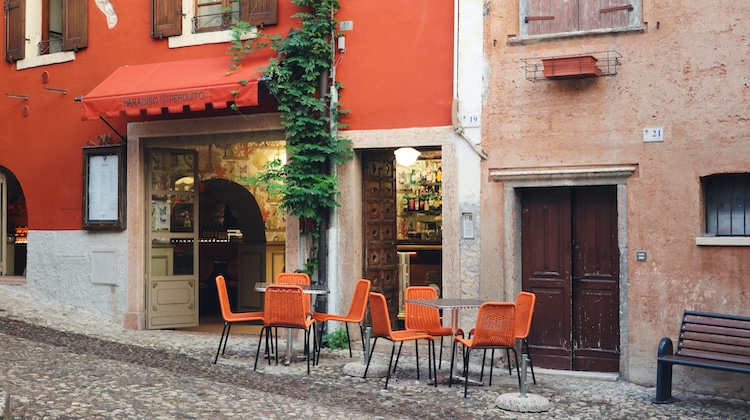Learning Italian can be both rewarding and challenging. One of the aspects that often confuses learners is the subtle difference between seemingly similar expressions. A great example of this is the pair “Quanto costa” and “Quant’è”. Both are used in contexts involving prices, but they are not always interchangeable. Understanding when and how to use each one is crucial if you want to sound natural in Italian and avoid misunderstandings while shopping, eating out, or simply chatting with locals.
In this article, we’ll break down the meaning, grammar, and usage of both expressions, providing examples and cultural context so you can confidently use them in everyday conversations.
1. The Meaning of “Quanto costa”
The phrase “Quanto costa” literally translates to “How much does it cost?”
● Quanto = how much
● Costa = it costs (third-person singular form of costare, “to cost”)
This question is typically used when you are asking about the price of a specific item. For example:
● Quanto costa questo libro? → How much does this book cost?
● Quanto costa il biglietto del treno? → How much does the train ticket cost?
● Quanto costa quella borsa? → How much does that bag cost?
Notice that you usually follow quanto costa with the name of the item in question, or you might point to it while asking.
When to use “Quanto costa”
● When referring to one single object.
● When shopping in stores, markets, or boutiques.
● When you want to know the price of an item on display.
If you want to ask the price of several items, you would need to use the plural form:
● Quanto costano queste scarpe? → How much do these shoes cost?
Here, the verb costare is conjugated in the plural (costano) because “scarpe” (shoes) is plural.
2. The Meaning of “Quant’è”
The expression “Quant’è” is a contraction of “Quanto è”, which literally means “How much is it?”
This phrase is slightly more flexible in its usage. It is often used:
1. To ask the total amount when you are ready to pay.
2. To inquire about the overall cost rather than the price of a single item.
For example:
● At a café, after finishing your coffee and pastry:
Quant’è? → How much is it (in total)?
● At a market stall when buying several things:
Quant’è tutto? → How much is everything?
● At the pharmacy when you don’t know the exact price beforehand: Quant’è, per favore? → How much is it, please?
When to use “Quant’è”
● At checkout, when asking for the total bill.
● In situations where the exact price of each individual item is not important, but the final sum matters.
● When speaking more informally and quickly.
In everyday spoken Italian, “Quant’è” can sound a bit more natural than “Quanto costa” when you are ready to pay.
3. Comparing the Two Expressions
While both “Quanto costa” and “Quant’è” deal with price, the key difference lies in specificity vs. totality.
● Quanto costa → Used when asking the price of a particular item.
● Quant’è → Used when asking for the total price (often at the point of payment).
Let’s look at a simple shopping scenario to illustrate:
You’re at a clothing store:
● You see a sweater you like. You ask:
Quanto costa questo maglione? (How much does this sweater cost?)
● You decide to buy the sweater plus a pair of jeans. At the counter, you ask: Quant’è tutto? (How much is everything?)
4. Cultural Nuances
Italians often use body language and tone along with these expressions. For instance, when asking “Quant’è?” at a café, it is usually accompanied by handing over some coins or gesturing toward the cash register.
Another nuance is politeness. You can make either phrase more polite by adding per favore (please):
● Quanto costa questo, per favore?
● Quant’è, per favore?
In many parts of Italy, especially in smaller towns and traditional shops, these small politeness markers are highly appreciated.
Also, note that “Quanto viene?” is sometimes used instead of Quant’è. It literally means “How much does it come to?” and carries the same meaning as “Quant’è” in contexts where you are asking for the total bill.
5. Common Mistakes to Avoid
1. Using “Quant’è” when pointing to an item on display.
○ If you’re asking about the price of a single item, use Quanto costa.
○ Saying Quant’è questo libro? is understandable, but not as idiomatic as Quanto costa questo libro?
2. Forgetting the plural form.
○ Always match the verb costare to the number of items:
■ Quanto costa il panino? (singular)
■ Quanto costano i panini? (plural)
3. Overusing “Quanto costa” at checkout.
○ It’s more natural to say Quant’è? or Quanto viene? when paying for multiple items.
6. Summary
● “Quanto costa” = “How much does it cost?” → used for the price of a specific item.
● “Quant’è” = “How much is it?” → used for the total amount, often at checkout.
By mastering this distinction, you’ll not only improve your grammar but also sound much more natural in everyday interactions in Italy. Next time you’re traveling, whether you’re buying gelato, a train ticket, or souvenirs, you’ll know exactly which phrase to usePerfect! Here’s a practical dialogue example that illustrates the difference between “Quanto costa” and “Quant’è” in a real-life situation.
Dialogue Example: At the Café
[Anna enters a café in Rome.]
Anna: Buongiorno! Quanto costa un cappuccino?
(Good morning! How much does a cappuccino cost?)
Barista: Costa un euro e cinquanta.
(It costs €1.50.)
Anna: Bene. Allora prendo un cappuccino e una brioche.
(Great. Then I’ll have a cappuccino and a croissant.)
[Anna enjoys her breakfast. When she’s ready to pay, she goes to the counter.]
Anna: Quant’è, per favore?
(How much is it, please?)
Barista: In totale sono tre euro.
(In total it’s €3.)
What Happened Here?
● Quanto costa un cappuccino? → Anna asked the price of one specific item (the cappuccino).
● Quant’è, per favore? → At checkout, she asked for the total bill for everything she ordered.
Dialogue Example: At the Street Market
[Marco is shopping at an outdoor market.]
Marco: Mi scusi, quanto costano queste mele?
(Excuse me, how much do these apples cost?)
Venditore: Due euro al chilo.
(€2 per kilo.)
Marco: Perfetto, ne prendo due chili.
(Perfect, I’ll take two kilos.)
[The vendor puts the apples in a bag and hands them to Marco.]
Marco: Quant’è tutto?
(How much is everything?)
Venditore: Sono quattro euro.
(That’s €4.)
What Happened Here?
● Quanto costano queste mele? → Marco wanted to know the price per kilo (specific).
● Quant’è tutto? → He then asked for the total amount he had to pay.
These short dialogues show the natural flow of conversation and how Italians use the two expressions differently in everyday life.







